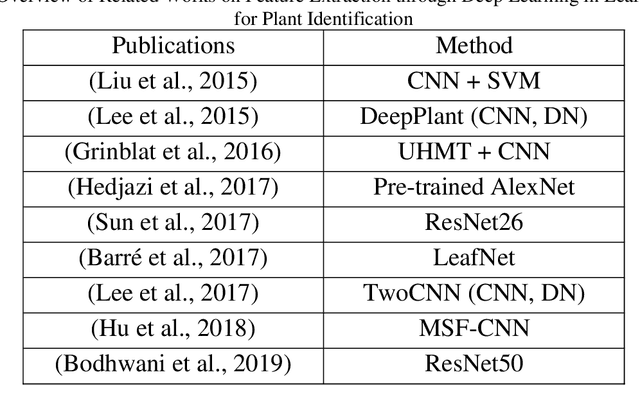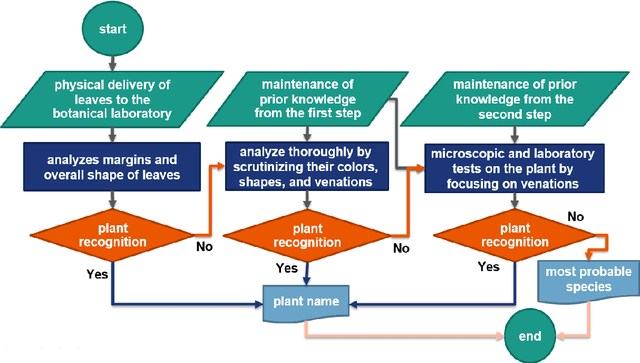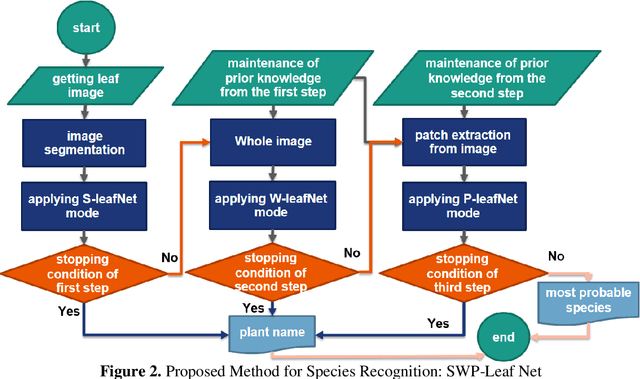SWP-Leaf NET: a novel multistage approach for plant leaf identification based on deep learning
Paper and Code
Sep 10, 2020



Modern scientific and technological advances are allowing botanists to use computer vision-based approaches for plant identification tasks. These approaches have their own challenges. Leaf classification is a computer-vision task performed for the automated identification of plant species, a serious challenge due to variations in leaf morphology, including its size, texture, shape, and venation. Researchers have recently become more inclined toward deep learning-based methods rather than conventional feature-based methods due to the popularity and successful implementation of deep learning methods in image analysis, object recognition, and speech recognition. In this paper, a botanist's behavior was modeled in leaf identification by proposing a highly-efficient method of maximum behavioral resemblance developed through three deep learning-based models. Different layers of the three models were visualized to ensure that the botanist's behavior was modeled accurately. The first and second models were designed from scratch.Regarding the third model, the pre-trained architecture MobileNetV2 was employed along with the transfer-learning technique. The proposed method was evaluated on two well-known datasets: Flavia and MalayaKew. According to a comparative analysis, the suggested approach was more accurate than hand-crafted feature extraction methods and other deep learning techniques in terms of 99.67% and 99.81% accuracy. Unlike conventional techniques that have their own specific complexities and depend on datasets, the proposed method required no hand-crafted feature extraction, and also increased accuracy and distributability as compared with other deep learning techniques. It was further considerably faster than other methods because it used shallower networks with fewer parameters and did not use all three models recurrently.
 Add to Chrome
Add to Chrome Add to Firefox
Add to Firefox Add to Edge
Add to Edge